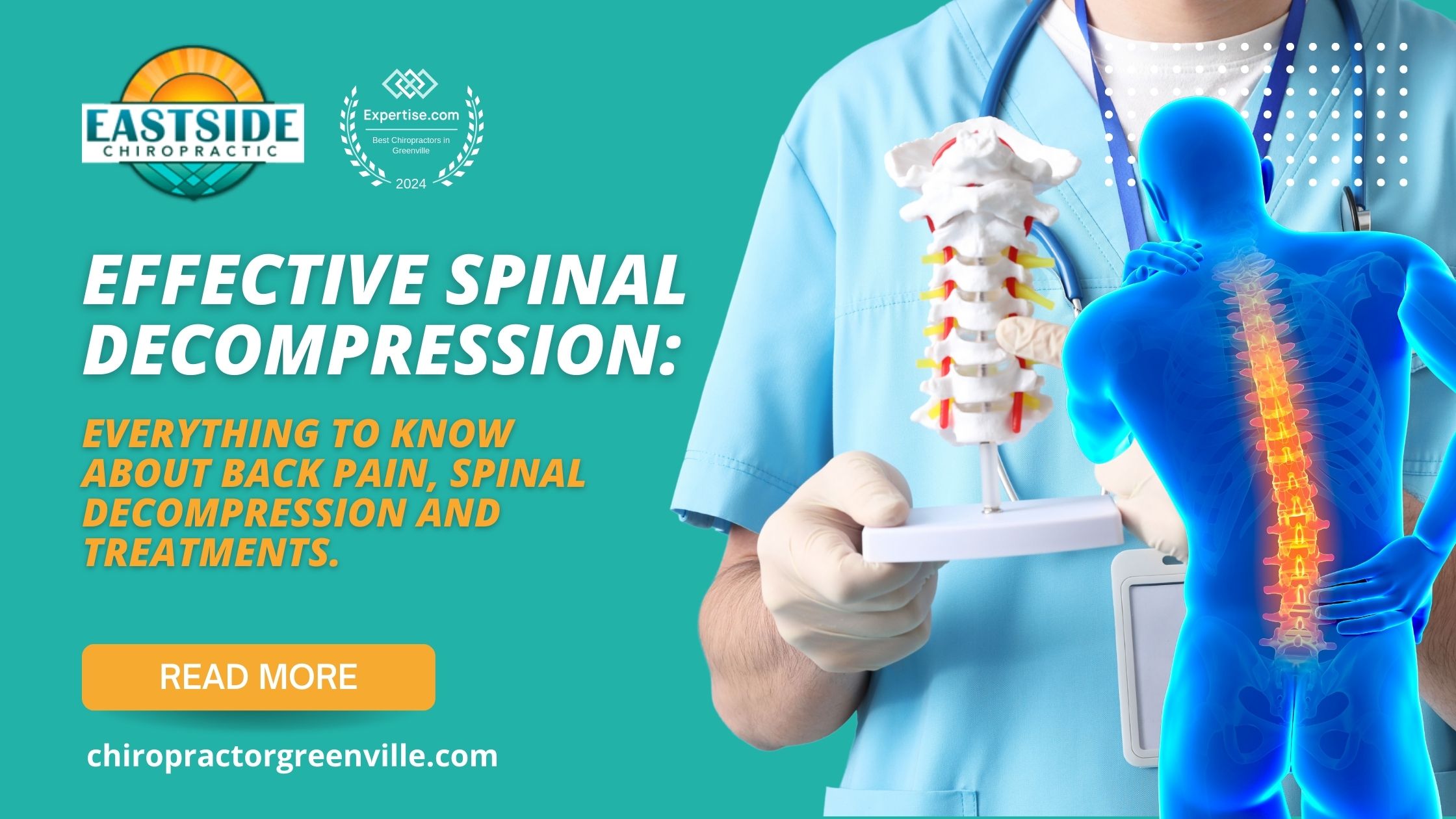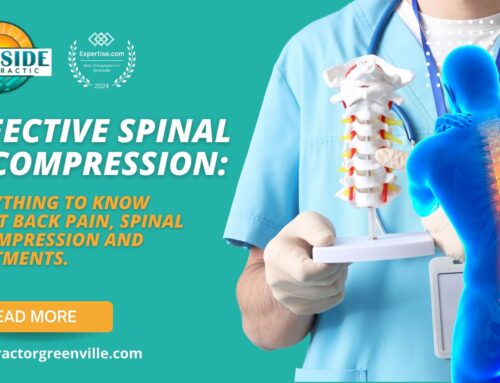Risks and Side Effects of Spinal Decompression: What You Need to Know
Spinal decompression is a buzzword in the world of chiropractic care, and rightly so—it offers a potential lifeline for those battling chronic back pain. But just like with any medical procedure, it’s essential to weigh the benefits against the risks and side effects. So, let’s dive into everything you need to know about spinal decompression, specifically focusing on the risks and side effects associated with it, all from the expertise of Eastside Chiropractic PA in Taylors, SC.
What is Spinal Decompression?
First off, let’s get the basics down. Spinal decompression is a therapeutic technique aimed at relieving pressure on compressed spinal discs. This can be achieved either through non-surgical mechanical methods or more invasive surgical techniques. Mechanical decompression often involves a special traction table that stretches the spine, while surgical options might include procedures to remove parts of the bone or disc material to alleviate pressure.
Benefits of Spinal Decompression
Before we delve into the risks, it’s only fair to highlight why people opt for spinal decompression in the first place. The primary benefit is pain relief. For those suffering from conditions like herniated discs, sciatica, and degenerative disc disease, spinal decompression can be a game-changer. Improved mobility and a reduction in the reliance on pain medications are other significant pluses.
Understanding the Risks Involved
While spinal decompression boasts numerous benefits, it’s not without its risks. Understanding these risks can help you make an informed decision. Generally, the risks are minimal when you undergo non-surgical spinal decompression under the care of a qualified professional. However, like any medical procedure, it’s essential to be aware of potential downsides.
Common Side Effects
Non-surgical spinal decompression is generally considered safe, but there are some common side effects to be aware of:
- Short-term discomfort: It’s not unusual to feel some level of discomfort following a spinal decompression session. Your muscles and spine are being manipulated, so some initial soreness is to be expected.
- Headaches: Some individuals report experiencing headaches after treatment. These usually subside within a short period but can be bothersome.
- Muscle spasms: The stretching and realignment of the spine can sometimes trigger muscle spasms, particularly in the early stages of treatment.
Rare but Serious Risks
Though rare, there are serious risks associated with spinal decompression, particularly with surgical methods:
- Worsening of pain: Although the goal is to reduce pain, there are instances where patients report an increase in discomfort.
- Nerve damage: During surgical spinal decompression, there’s a risk of nerve damage which can lead to numbness, tingling, or even loss of function.
- Infections and complications: Surgical procedures carry the risk of infections and other post-operative complications, which can be serious and require immediate medical attention.
Candidates for Spinal Decompression
So, who should consider spinal decompression? This treatment is beneficial for individuals suffering from conditions like herniated discs, sciatica, and other forms of chronic back pain. However, it’s crucial to consult a healthcare professional to determine if you’re a suitable candidate. Pregnant women, individuals with broken vertebrae, spine implants, or those with severe osteoporosis should avoid this treatment.
How to Minimize Risks
Minimizing risks boils down to one main factor: choosing a qualified professional. Ensure that your chiropractor has the necessary credentials and experience. Comprehensive pre-treatment assessments can also help in tailoring the procedure to your specific needs, thereby minimizing potential risks.
Post-Treatment Care
Adhering to post-treatment guidelines is as important as the treatment itself. This might include physical therapy, specific exercises, and regular check-ups to monitor progress and address any emerging side effects promptly.
Testimonials and Case Studies
Hearing from real people who have undergone spinal decompression can provide invaluable insights. Many patients from Eastside Chiropractic PA have shared positive experiences, noting significant pain relief and enhanced quality of life. However, some have also highlighted minor setbacks like short-term discomfort and muscle soreness, emphasizing the need for realistic expectations.
Comparisons with Other Treatments
How does spinal decompression stack up against other treatments? Compared to physical therapy and pain medication, spinal decompression offers a more targeted approach to relieve pressure from spinal discs. While surgical options provide a more permanent solution, they come with higher risks and longer recovery times.
What to Expect During a Session
Your first session of spinal decompression might feel a bit daunting, but knowing what to expect can ease some of that anxiety. Typically, the process starts with an initial consultation to assess your condition. During the procedure, you’ll be positioned on a specialized table where your spine will be gently stretched to relieve pressure on the discs. Post-treatment, you might feel some soreness, which is usually temporary.
Tips for Choosing a Chiropractic Clinic
Choosing the right clinic is paramount. Look for clinics with positive reviews, qualified practitioners, and state-of-the-art equipment. At Eastside Chiropractic PA, we pride ourselves on meeting these criteria, ensuring that your well-being is our top priority.
FAQs about Spinal Decompression
Got questions? We’ve got answers. The most common queries include:
- Does spinal decompression hurt?
- How long does each session last?
- Is it covered by insurance?
- How many sessions will I need?
- What should I wear for the treatment?
Conclusion
Spinal decompression can offer significant relief for chronic back pain, but it’s crucial to understand the risks and side effects involved. By consulting with qualified professionals and adhering to recommended post-treatment care, you can minimize these risks and make the most out of your treatment.
Additional Resources
For more information, feel free to reach out to us at Eastside Chiropractic PA in Taylors, SC. Our team is here to help you navigate the complexities of spinal decompression and ensure you receive the best possible care.
FAQs
1. Does spinal decompression hurt?
– Generally, spinal decompression does not hurt, although you might experience some discomfort or soreness initially.
2. How long does each session last?
– Each session typically lasts between 30 to 45 minutes.
3. Is it covered by insurance?
– Coverage varies, so it’s best to check with your insurance provider for specifics.
4. How many sessions will I need?
– This depends on your specific condition, but most patients require multiple sessions spread over several weeks.
5. What should I wear for the treatment?
– Comfortable, loose-fitting clothing is ideal for spinal decompression sessions.
Feel free to reach out to Eastside Chiropractic PA for any further questions or to book a consultation.


